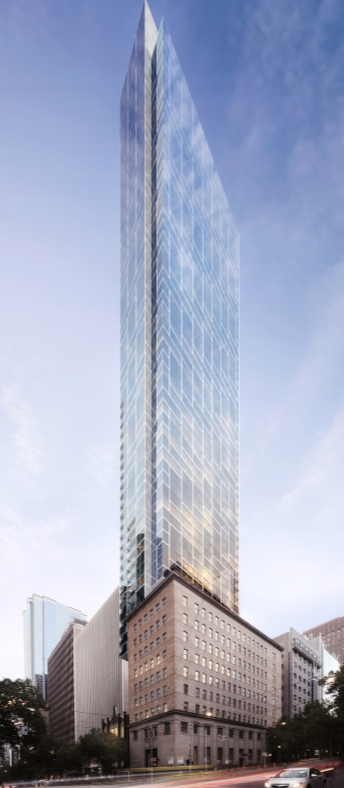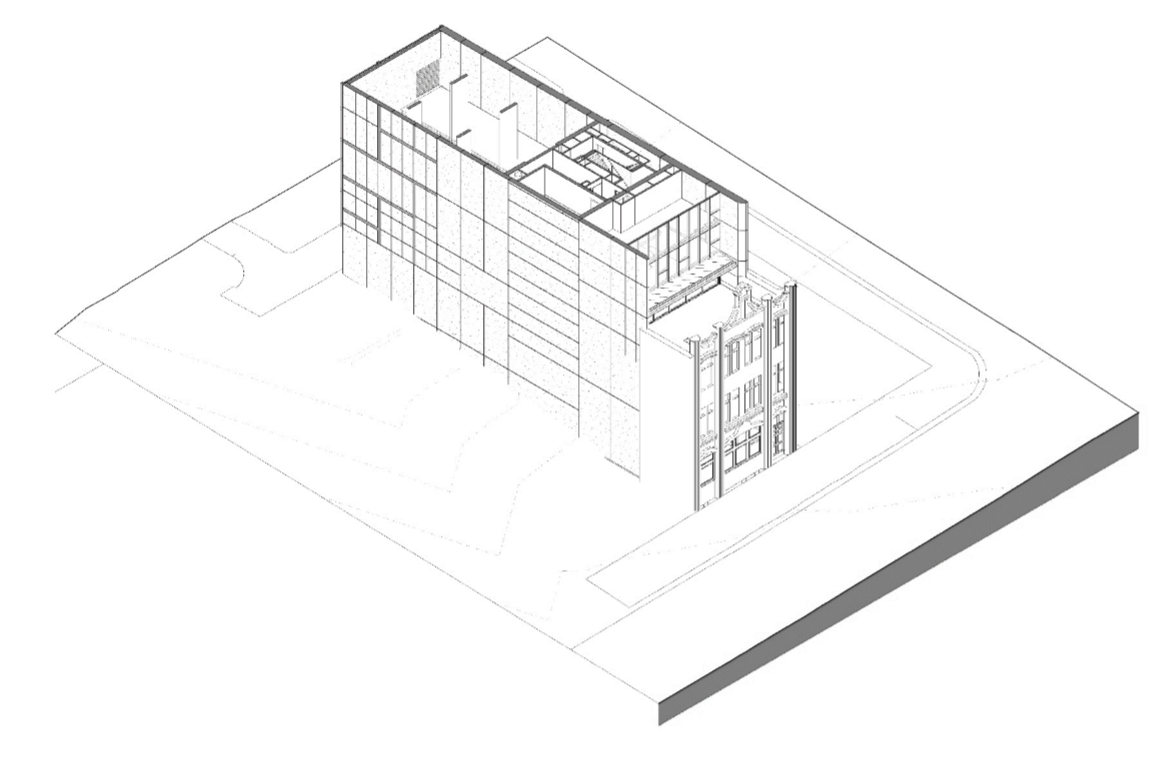Designed to enhance the western end of Collins Street with a bold and elegant landmark building, which derives its gracefulness from its slender proportions, the site’s main asset is the well-proportioned and decorative heritage building, which was built in 1908.
There is an opportunity to reinstate the original features and enhance the reading of the building through reconnecting internal spaces with the facade proportions and the use of a refi ned entry foyer, connected to the street through the re-instated original entry doors. By setting the tower back from the existing heritage facade and reinstating its original grandeur, the proposed development seeks to create a landmark building both at street level and in the city skyline context.

The narrow site has required a rethinking of the structure of tall buildings. Through an inventive structural system combined with cutting edge construction techniques, we have been able to reinvent the tall tower completely. Turning the building inside out and moving the structural core to the perimeter of the building eliminates columns completely, allowing the height and slenderness of the building to be maximised.

The starting point in the design of the building is the expression and refinement of the structural system. The H-shaped vertical concrete structure is over-clad with glass on the North and South ends of the building and it is expressed on the East and West facades, contributing to a bold but elegant form.

This is accompanied by a crisply detailed component which cantilevers over the air rights
of the adjoining building, creating a unified and uniform skin over the eastern elevation. All the facades are wrapped in a feature herringbone aluminium pattern that acts as a veil and a unifying element. The feature herringbone, with its reflectivity is a dramatic and lively component of the facade and an identifiable and memorable element that makes Collins House a landmark in the city’s skyline. Amenities are located at Storeys 3 and 27, providing a resident lounge with a terraced area, kitchen and BBQ facilities on level 3, and a fully equipped kitchen, dining room, lounges, bar, cinema room and gym facilities overlooking the city on level 27.

Key facts
- Collins House is the slimmest tower in Australia and 4th slimmest in the world
- 480sqm footprint, the equivalent of one netball court
- 184m height from the ground • 60 levels from basement to rooftop
- 258 apartments
- 4.5m cantilevered over adjoining building
- 472 “HBS” (Hickory Building Systems) integrated facade and structural modules installed
- 1,000+ tonnes of steel used
Camilla Tierney, Architect at Bates Smart
“I commenced my role at Bates Smart in 2017 and have been involved in the architectural component of Collins House since the start of onsite construction.
“I have the privilege to work with some of the best in the industry, particularly under the leadership of Kristen Whittle, Mark Healey and Carlos Lara. I have had the opportunity to collaborate closely with our interior team including Louisa Steffen (nee Watts), and structural engineer Vince De Stefano who has been invaluable from 4D Workshop. These strong internal working relationships at Bates Smart have been vital to my growth as an architect and have given me the opportunity to extend my passion for architecture.
“Collins House is such a unique project, not only for being the first of its kind in terms of modular construction and a building to have bought air-rights, but also its tight building constraints. Collins House has been such a landmark project to be involved with in terms of its scale and technical aspects – at the last count, we had reviewed 2,382 precast shop drawings alone.
“It was a pleasure to work with the client, Golden Age Group and the construction team from Hickory to deliver the project which is set for completion later this year,” says Tierney.
Image credit: Bates Smart

